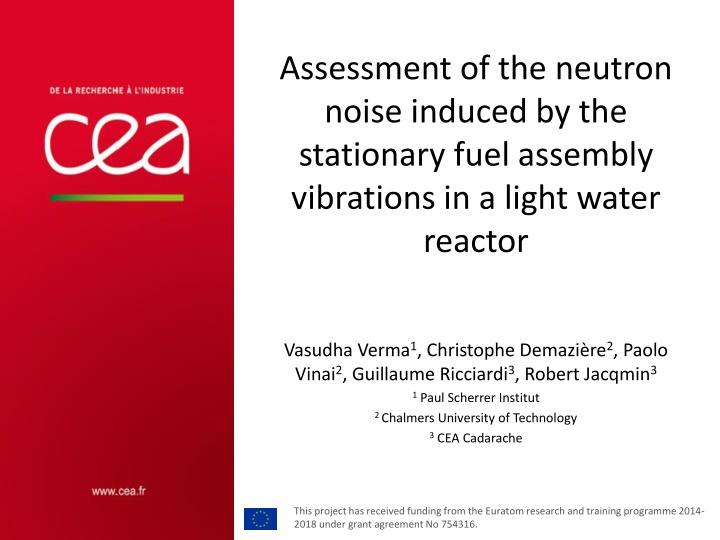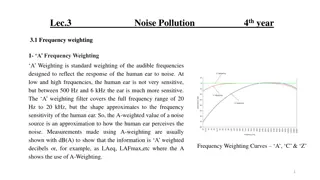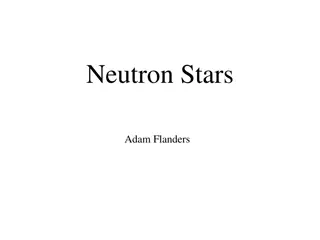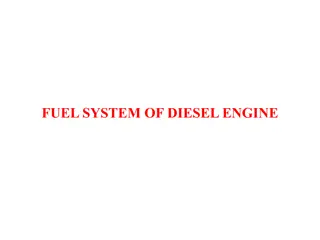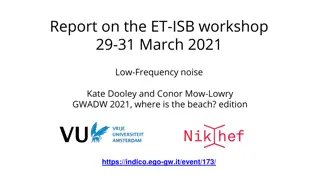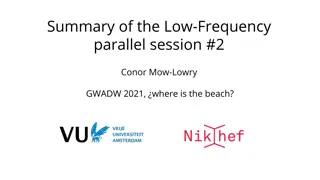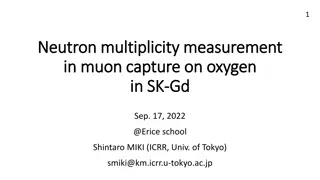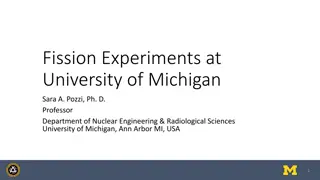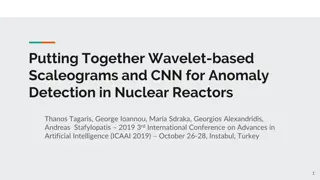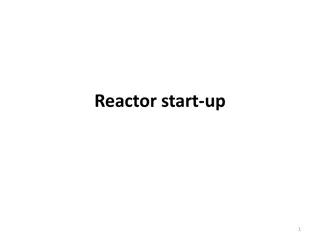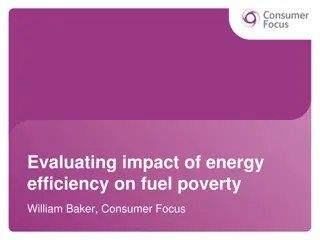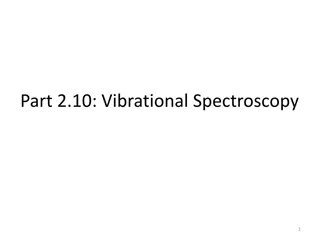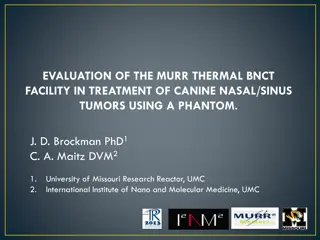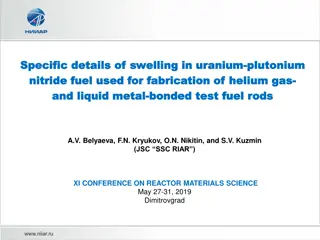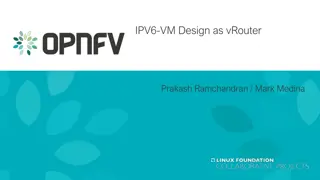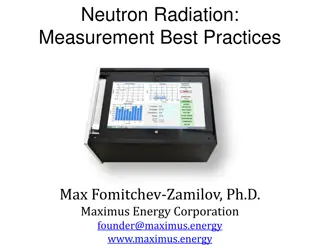Assessment of Neutron Noise Induced by Fuel Assembly Vibrations
This assessment focuses on neutron noise induced by stationary fuel assembly vibrations in a light water reactor. It discusses the impact on plant availability, operational issues, and the need to identify anomalies in PWRs. The study compares nodal-based and pin methods for modeling fuel assembly vibrations.
Download Presentation

Please find below an Image/Link to download the presentation.
The content on the website is provided AS IS for your information and personal use only. It may not be sold, licensed, or shared on other websites without obtaining consent from the author.If you encounter any issues during the download, it is possible that the publisher has removed the file from their server.
You are allowed to download the files provided on this website for personal or commercial use, subject to the condition that they are used lawfully. All files are the property of their respective owners.
The content on the website is provided AS IS for your information and personal use only. It may not be sold, licensed, or shared on other websites without obtaining consent from the author.
E N D
Presentation Transcript
Assessment of the neutron noise induced by the stationary fuel assembly vibrations in a light water reactor Vasudha Verma1, Christophe Demazi re2, Paolo Vinai2, Guillaume Ricciardi3, Robert Jacqmin3 1 Paul Scherrer Institut 2 Chalmers University of Technology 3 CEA Cadarache This project has received funding from the Euratom research and training programme 2014- 2018 under grant agreement No 754316.
Introduction Neutron noise M&C 2019 Portland, Oregon, 25th - 29th August 2019 2
Introduction Neutron noise X(r,t)=Xo(r,t)+ X(r,t) Noise is deviation of any time-dependent variable from its mean value Noise always present; even at steady-state reactor conditions, fluctuations due to e.g. vibrations of mechanical components occur M&C 2019 Portland, Oregon, 25th - 29th August 2019 3
Introduction Neutron noise in some PWRs Systematic increase in the noise levels in SIEMENS pre-Konvoi PWR reactors over several cycles; Impact on the availability of the plant Operational problems due to Increased mechanical vibrations of reactor internals, especially fuel assembly (FA) vibrations Thermal-hydraulic parameters fluctuations Important to identify and locate anomalies M&C 2019 Portland, Oregon, 25th - 29th August 2019 4
Introduction Neutron noise in some PWRs Systematic increase in the noise levels in SIEMENS pre-Konvoi PWR reactors over several cycles; Impact on the availability of the plant Operational problems due to increased mechanical vibrations of reactor internals, especially fuel assembly (FA) vibrations Thermal-hydraulic parameters fluctuations Important to identify and locate anomalies Conventional codes use nodal methods and assembly-homogenized XSs to model fuel assembly vibrations; Displacement (sub-mm) smaller than coarse mesh size Fixed computational grid Difficult to reproduce local intra-nodal perturbations M&C 2019 Portland, Oregon, 25th - 29th August 2019 5
Introduction Purpose of the study Objectives: Perform comparative analysis between nodal-based and pin-based modelling approaches Investigate the impact of XS homogenization on the modeling of fuel assembly vibrations Approaches are based on the /d model M&C 2019 Portland, Oregon, 25th - 29th August 2019 6
Methodology Noise analysis approach Collective movement of fuel pins assumed Radial movement of FAs along one preferred direction M&C 2019 Portland, Oregon, 25th - 29th August 2019 7
Methodology Noise analysis approach /d model For two neighboring regions - regions II and III: ,?? = 1 ? ? ,?,??+ ? ? ,?,??? (1) Using ? ?,? = ?? + ? and 1st order Taylor Expansion ,?? = 1 ? ?0 ,?,??+ ? ?0 ,?,???+ ? ? ?0 ,?,?? ,?,??? (2) Since static microscopic XS (when (t) = 0) is ,?,0? = 1 ? ?0 ,?,??+ ? ?0 ,?,??? (3) Therefore, noise source corresponding to fluctuating boundary between II and III is expressed as ,??,? = (?) ? ?0 ,?,?? ,?,??? (4) Or in frequency-domain as ,??, = ( ) ? ?0 ,?,?? ,?,??? (5) M&C 2019 Portland, Oregon, 25th - 29th August 2019 8
Methodology Noise analysis approach /d Approach Fuel assembly level (Nodal) Pin cell level M&C 2019 Portland, Oregon, 25th - 29th August 2019 9
Methodology Noise analysis approach /d Approach Fuel assembly level (Nodal) Pin cell level Assembly-approximated Region I and III: Neighboring FAs Region II: Vibrating FA Noise sources defined as the difference of the static macroscopic cross sections between Region II and Region I, and Region II and III. M&C 2019 Portland, Oregon, 25th - 29th August 2019 10
Methodology Noise analysis approach /d Approach Fuel assembly level (Nodal) Pin cell level Assembly-approximated Boundary-localized Region I and III: Neighboring FAs Region II: Vibrating FA Noise sources defined as the difference of the static macroscopic cross sections between Region II and Region I, and Region II and III. M&C 2019 Portland, Oregon, 25th - 29th August 2019 11
Methodology Noise analysis approach /d Approach Fuel assembly level (Nodal) Pin cell level Assembly-approximated Boundary-localized Region I and III: Moderator Region II: Fuel Region I and III: Neighboring FAs Region II: Vibrating FA Noise sources defined as the difference of the static macroscopic cross sections between Region II and Region I, and Region II and III. M&C 2019 Portland, Oregon, 25th - 29th August 2019 12
Methodology Calculation route Step 1: XS generation with SERPENT2 2-D core design representative of a LWR; 3x3 fuel assemblies, each containing UOX fueled 17x17 pins surrounded by water Vibrating FA (2.5% UOX) Neighboring FA (3.7% UOX) Vibrating FA has slightly lower enrichment 2G cross sections at nodal and pin level M&C 2019 Portland, Oregon, 25th - 29th August 2019 13
Methodology Calculation route Step 1: XS generation with SERPENT2 2-D core design representative of a LWR; 3x3 fuel assemblies, each containing UOX fueled 17x17 pins surrounded by water Vibrating FA (2.5% UOX) Neighboring FA (3.7% UOX) Vibrating FA has slightly lower enrichment 2G cross sections at nodal and pin level Step 2: Neutron noise calculation with CORESIM 2G neutron noise diffusion equations in the frequency domain 1-D reactor model of size 130 cm with a fine mesh FA size = 21.42 cm; Mesh node size = 0.03 cm; Pin pitch = 1.26 cm; Frequency = 1 Hz M&C 2019 Portland, Oregon, 25th - 29th August 2019 14
Results Case 1: Nodal calculations Case 1a (Red): Boundary-localized nodal Case 1b (Green): Assembly-approximated nodal Fast group Thermal group Note: Both fast and thermal noise sources are introduced Dashed lines represent the interfaces in the core 15
Results Case 1: Nodal calculations Case 1a (Red): Boundary-localized nodal Case 1b (Green): Assembly-approximated nodal Fast group Thermal group Note: Both fast and thermal noise sources are introduced Dashed lines represent the interfaces in the core 16
Results Case 1: Nodal calculations Case 1a (Red): Boundary-localized nodal Case 1b (Green): Assembly-approximated nodal Thermal group Fast group (a-d): Only fast noise sources introduced 17
Results Case 1: Nodal calculations Case 1a (Red): Boundary-localized nodal Case 1b (Green): Assembly-approximated nodal Thermal group Fast group Thermal group Fast group (a-d): Only fast noise sources introduced (e-h): Only thermal noise sources introduced 18
Results Comparison b/w nodal and pin- level calculations Case 1a (Red): Boundary-localized nodal Case 1b (Green): Assembly-approximated nodal Case 2 (Blue): Pin-level Thermal group Fast group Note: Both fast and thermal noise sources are introduced 19
Conclusions Simple 1D CORESIM-based model of neutron noise sources resulting from FA vibrations presented; Impact of cross section homogenization on FA vibrations studied Nodal codes can faithfully represent the collective and coherent movement of the fuel pins of a FA Both nodal approaches lead to essentially identical results sufficiently away from the perturbation; Close to the perturbation, the two approaches provide rather different response Boundary-localized nodal approach should be preferred as it appears to capture local noise information (as a pin-wise approach would do), without requiring an ultra-fine mesh 20
Assessment of the neutron noise induced by the stationary fuel assembly vibrations in a light water reactor Vasudha Verma1, Christophe Demazi re2, Paolo Vinai2, Guillaume Ricciardi3, Robert Jacqmin3 1 Paul Scherrer Institut 2 Chalmers University of Technology 3 CEA Cadarache This project has received funding from the Euratom research and training programme 2014- 2018 under grant agreement No 754316.
